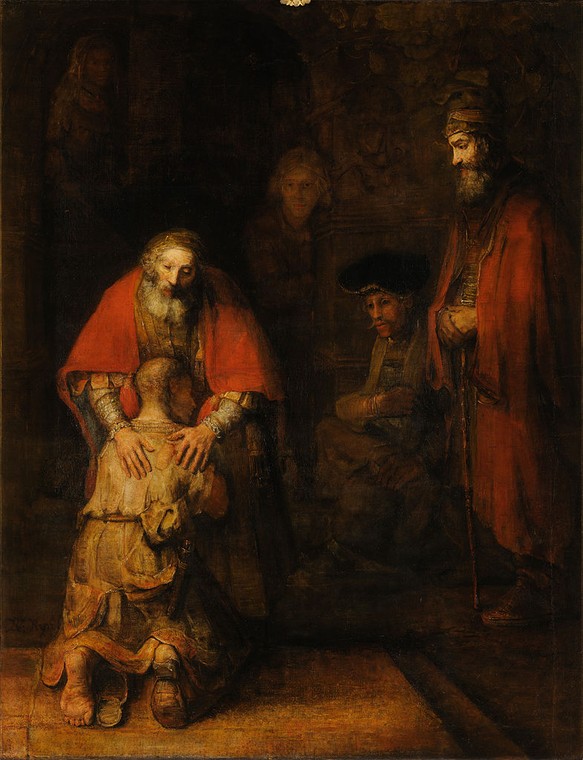 |
|
Rembrandt van Rijn’s The Return of the Prodigal Son, c. 1661–1669, was used for a devotional on Luke 6:37-38 and Luke 23:34.
|
The liturgical church has two seasons of preparation: Advent, which leads to Christmas, and Lent, which leads to Easter. Advent is an unabashedly joyous time, in the arts as well as in life. Paintings of the census at Bethlehem, the Annunciation, the birth of Jesus, the shepherds in the fields—these all make us smile. The Madonna with her infant child is the most painted subject in art history. And even the non-musical among us can croak along to Christmas carols that are centuries old.
 |
|
Crying Triptych, by Patty Wickman, was paired with a sonnet by John Donne and Psalm 51.
|
We don’t usually associate Lent with the arts, perhaps because the arts are essentially sensory and we see this season as being about repudiation of the sensual. Still, artists have been drawn to the themes of Christ’s crucifixion and resurrection. Holy Week will see some of us walking the Stations of the Cross or listening to Bach’s St. Matthew’s Passion, and both are fundamentally Lenten themes.
The Lent Project by Biola University has assembled a series of daily Lenten devotionals using layered art, music, and Scripture. It continues through the Sunday after Easter. This being its first year, the jury is still out about the selections and their treatment, but why not try it out for yourself? You can subscribe here.
A note: the credits for music, text and paintings are in an About link at the bottom right corner of each entry. It’s easy to miss.
 |
|
The Pharisee and the Publican, by James Tissot, was used to amplify Luke 18:9-14.
|
Let me know if you’re interested in painting with me in Maine in 2014 or Rochester at any time. Click here for more information on my Maine workshops!
